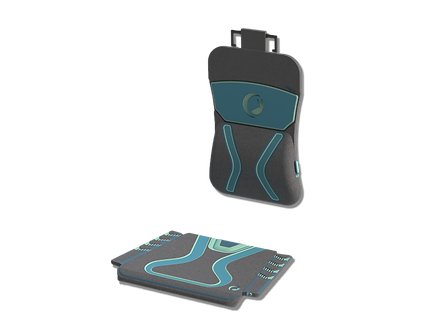

Date:
Jan. - Mar. 2021
Team:
Jordan Krueger, Daniela Mihajlovic, Salia Khalighmoeini, Jordan Migliazza, Thomas Edmonds, Mackenzie O'Mahony
Course:
UXD5503 - Prototyping Design
Contributions: Data Collection and User Interviews, Affinity Mapping, Empathy Mapping, Journey Mapping, Personas, Ideation and UI Sketches, Low-fi Wireframes, Moodboard, Prototype Development, Final Presentation
OBJECTIVE
Approximately 15.4 million Canadians get behind the wheel each day, with many being required to endure long distance drives. As a result, fatigue presents a serious problem, as 26% of all fatal injury crashes are estimated to be related to fatigued driving / being tired at the wheel. These tragic incidents can be prevented, however there currently are not enough solutions to this problem available in the market.
After narrowing in on this problem space, our group began working towards a potential solution with the following objective:
HOW MIGHT WE create a system that directly reduces the amount of sleep related driving accidents and help keep drivers safe?


PROCESS


Our first steps began with examining current studies regarding fatigue and obtaining statistics presenting its correlation with motor vehicle accidents. The research showed that this correlation was especially prevalent in subjects who commute long distances (those who travel long distances to work or who drive for a living).
To gain a better understanding of this target demographic, our group organized and executed semi-structured interviews with several of these individuals to learn more about their current driving practices and measure their awareness of fatigued driving.
The accumulated information was organized using Miro to group similar material and discover potential areas of opportunity. User personas and customer journey maps were also generated to better define the target demographic's current experience and pain points.


We began to explore different solutions to the issues identified in our research. Utilizing brainwriting techniques, the group generated a variety of potential ideas to address the problem space, which were then evaluated using a prioritization grid.

We then began to create sketches and low-fi wireframes to better visual the product. The design went through multiple iterations to incorporate feedback and additional features.


END RESULT

Our final idea consisted of:
-
a smart seat cover which provides haptic feedback to wake drowsy drivers,
-
a Front and Driver facing Rear View Mirror camera which would track the driver’s facial patterns to determine when they are falling asleep, and
-
a system to track road lines in order to detect when the driver may be veering off course.
These devices would be monitored through an app on the drivers phone, which can keep records of their driving patterns, work with Google Maps to plan their route and rest stops, and allow the user to calibrate the sensors for optimal use.


